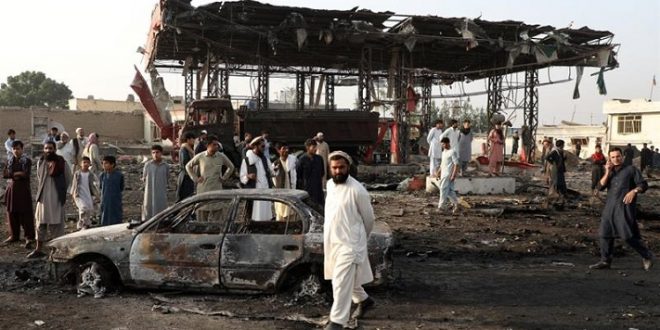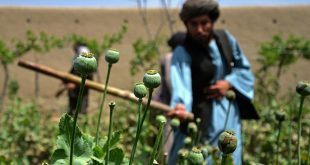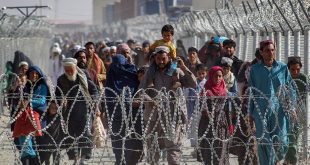By Hamayun Khan
The word “Afghanistan” abruptly captures one’s mind when the very term “Terrorism” comes up. Afghanistan has been a battlefield and a strategic roadmap that bridges a gap for the regional powers to reach their targets. a report published in the year 2018 says that Afghanistan has bypassed Iraq to become the world’s deadliest country for terrorism, the report further describes the total death toll in the country since 2017 is one-quarter of the whole world.
There are many reasons behind the surged terror activities in the country but the following are considered to be the key drivers behind the perennial war and terrorism in Afghanistan:
- The strategic location of Afghanistan
- Increased level of unemployment
- Conflict over water with Pakistan
The strategic location of Afghanistan:
A landlocked country bordering with 7 countries with no access to the ocean, yet being rich with plenty of groundwater and natural resources connecting Central Asia with South Asia and Europe with Asia. the geo-political and geo-economical significance of Afghanistan make the country a focal point for the great powers, whereas the country itself has become a battlefield suffering for decades, it has been said that if Afghanistan is seized it is as if the whole Asia is controlled because of the geopolitical and geo-economic advantages the country has such as an ancient silk road passing through the heart of Afghanistan which connects China and other South Asian countries with Europe this makes Afghanistan a lucrative transit hub.
Therefore, history witnesses the failed struggles by the great empires to capture Afghanistan, i.e. (several invasions of the British empire on Afghanistan with the intention of precluding the Soviet empire to reach warm water, the then Soviet invasion of Afghanistan in the late 70s and the recent U.S war of Afghanistan, started in 2001 which is still going on). Afghanistan’s abundance in natural resources such as minerals grabs the attention of the great powers that seize the country. According to a study conducted jointly by the Afghan and American Geologists reveals that deposits of copper, mercury, rare-earth elements, sulfur, chromite’s asbestos, potash, graphite, and sand and gravel were found in over 20 mineralized areas of Afghanistan, the study further reveals that the total copper resources in Afghanistan range up to 60 million metric tons of which the sediment-hosted copper deposits at Aynak are estimated to contain nearly 30 million metric tons.
Afghanistan is also rich in uranium and various other natural resources, such excessiveness of unused natural resources entices powerful nations of the region and the world to grab control over Afghanistan to acquire those resources, as China has launched various mineral extraction projects in the mountainous regions located in north-eastern Afghanistan. to intercept china from geopolitical interference in Afghanistan its rival nations use various techniques for example; bailout of different militant groups in those areas is one of them which leads to the emergence of terror activities, also recruiting young Afghans to join those groups.
Increased Level of Unemployment:
Increased level of unemployment in the country is another key driver forcing the young Afghans to go for illegitimate activities of which joining the insurgent groups best exemplifies it. According to the data published by Trading Economics journal the current unemployment rate in Afghanistan is 8.90% since 2018 which is expected to trend around 8.80% in 2020. Due to the sprint in the level of unemployment people finds it strenuous to provide livelihood facilities for themselves, therefore most of the youngsters in Afghanistan are compelled to join terrorist groups, become drug addicts or escape to western countries through smuggling to find jobs and solve livelihood problems.
Conflict over water with Pakistan:
Afghanistan has abundant water resources. a recent study reveals that It produces 80 billion cubic meters of water every year, pumping 60 billion cubic meters of it to the neighbor countries specifically Pakistan. The Kabul River supplies 26% of the annual flow of water in the country, rising in the Hindu Kush and flowing along the borders of 11 provinces before draining into the Indus River near the city of Attock in Pakistan. The river and its tributaries provide an important source of livelihood for nearly 25 million people living around the basin.
The Afghan government to avert the water flow to Pakistan has several times attempted to outset construction projects to build an electric dam having been made deals with foreign construction firms, but due to the blatant interference of Pakistan causing security issues the projects have been failed. Since 2012 Pakistan Army has launched hundreds of thousands of rocket attacks on Kunar Province of Afghanistan trying to preclude the projects, it is reportedly said that if an electric dam is constructed over the Kunar river Pakistan will face a shortage of water which will cause inflation and agricultural complications. Also, Pakistan is accused of being a safe shelter for the terrorist group fighting in Afghanistan.
What should be done?
- Afghanistan should not be used as a battlefield or a strategic roadmap towards political objectives of powerful nations but, rather the country’s strategic location must be used as a roundabout for regional transit, because the location of Afghanistan best signifies the country to be a lucrative economic corridor for the development of the regional and international trade.
- One of the best ways to overcome the unemployment issue is to conventionalize entrepreneurship in the country so that youngsters could find job opportunities and be deprived of being involved in illegitimate activities.
- the groundwater of Afghanistan can be confined through its utilization in several ways within the country, such as the construction of electric dams, construction of canals and use of water for other agricultural activities in Afghanistan.
 Afghanistan Times
Afghanistan Times




